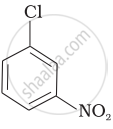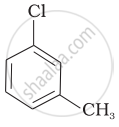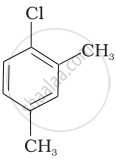Advertisements
Advertisements
प्रश्न
Chlorobenzene is extremely less reactive towards a nucleophilic substitution reaction. Give two reasons for the same.
उत्तर
Chlorobenzene is extremely less reactive towards a nucleophilic substitution reaction because of the following reasons:
(1) Resonance effect: The electron pair on chlorine atom is in conjugation with the π - electrons of the benzene ring which results in the following resonance structures:

-
This results in delocalization of the electrons of C − Cl bond and a partial double bond character develops in the bond, which makes it difficult for the nucleophile to cleave the C − Cl bond.
(2) The nucleophile suffers repulsion from the increased electron density on the benzene ring as a result the nucleophile is unable to make a close approach for the attack on the molecule.
APPEARS IN
संबंधित प्रश्न
The presence of nitro group (−NO2) at o/p positions increases the reactivity of haloarenes towards nucleophilic substitution reactions.
Write the product formed on reaction of D-glucose with Br2 water.
Out of (CH3)3 C-Br and (CH3)3 C-I, which one is more reactive towards SN1 and why?
Arrange the following compounds in increasing order of rate of reaction towards nucleophilic substitution.
| (a) |  |
| (b) |  |
| (c) |  |
Arrange the following compounds in increasing order of rate of reaction towards nucleophilic substitution.
| (a) |  |
| (b) |  |
| (c) |  |
Arrange the following compounds in increasing order of rate of reaction towards nucleophilic substitution.
| (a) |  |
| (b) |  |
| (c) |  |
Haloarenes are less reactive than haloalkanes and haloalkenes. Explain.
\[\ce{C6H12O6 ->[(Zymase)] A ->[NaOH][\Delta] B + CHI3}\]
The number of carbon atoms present in the product B is:
Assertion: Chlorobenzene is resistant to nucleophilic substitution reaction at room temperature.
Reason (R): C–Cl bond gets weaker due, to resonance.
Why haloarenes are not reactive towards nucleophilic substitution reaction? Give two reactions.
